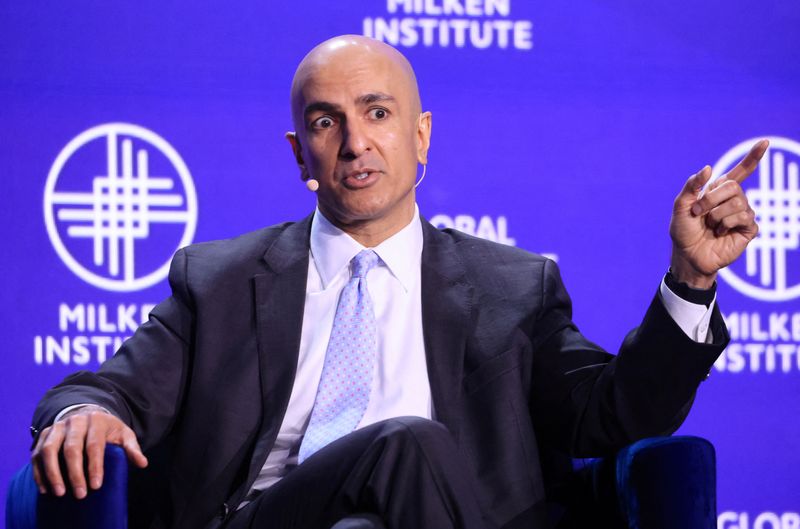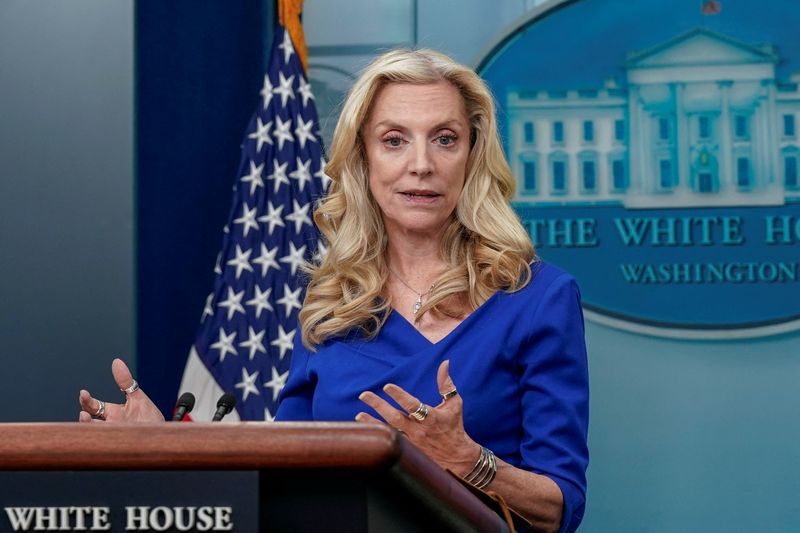Fed rate cuts will put money in pockets, but a mood shift may take time

By Howard Schneider and Ann Saphir
WASHINGTON (Reuters) – Even before the Federal Reserve approved its outsized half-percentage-point interest rate cut last week, financial markets had begun making credit cheaper for households and businesses as they bid down mortgage rates, cut corporate bond yields, and chipped away at what consumers pay for personal, auto and other loans.
How fast that process will continue now that the U.S. central bank’s first rate cut is in the books is unclear, in particular whether easing credit conditions will become tangible to consumers in ways that shift attitudes about the economy before the Nov. 5 U.S. presidential election.
Recent surveys suggest that while the pace of price increases has declined dramatically, the public’s mood is still marred by nearly two years of high inflation – even if falling rates signal that chapter of recent economic history is closed and will begin making it cheaper for people to borrow money.
“My daughter has been trying to buy a home for years and cannot,” said Julie Miller, who works at her son’s electrical company in Reno, Nevada, a state where home prices rose fast during the COVID-19 pandemic. One of seven key battleground states in the presidential race, Nevada is being aggressively contested by Vice President Kamala Harris, who replaced President Joe Biden as the Democratic candidate, and former President Donald Trump, the Republican challenger.
If housing costs are vexing Miller’s daughter, higher prices at Taco Bell have caused Miller to cut back on the usual Friday night trips to the fast food retailer with her granddaughter, and left her inclined to vote for Trump because “I don’t think Biden has done a great job with inflation.”
Harris supporters had similar concerns about high prices even as they vouched for her as the best candidate to address the problem.
BORROWING COSTS DECLINE
The Fed’s rate cut on Sept. 18 is likely to be followed by more, with at least another quarter-percentage-point reduction expected when policymakers begin their next two-day policy meeting a day after the U.S. election.
Just as rate increases feed through to a higher cost of credit for families and businesses, discouraging them from borrowing, spending and investing in order to cool inflation, reductions in borrowing costs change the calculus for would-be homebuyers and firms, particularly small businesses wanting to finance new equipment or expand production.
Looser monetary policy, which the Fed had been signaling was on the way, has already put money back into people’s pockets. The average rate on a 30-year fixed-rate home mortgage, the most popular home loan, for example, is approaching 6% after nearing 8% just a year ago. Redfin (NASDAQ:RDFN), a real estate firm, recently estimated that the median payment on homes sold or listed in the four weeks through Sept. 15 was $300 less than the all-time high hit in April and nearly 3% lower than a year ago.
But with that adjustment already done, “mortgage rates are likely to remain relatively stable for the next couple of weeks,” Chen Zhao, an economist at Redfin, wrote in a post on the company’s website.
Indeed, under baseline estimates from the Fed’s own staff, mortgage rates are likely to level off somewhere in the mid-5% range, meaning most of the relief there has already occurred.
Banks have begun trimming the “prime rate” they charge their most credit-worthy borrowers to match the Fed rate cut. Other forms of consumer credit – the auto and personal loans where a better deal might be available to households – have changed only marginally so far, and it may take longer for banks to give up on charging higher finance costs.
Investors and economists saw last week’s rate cut as less important than the message it carried of a central bank ready to loosen credit and confident that recent high inflation won’t recur.
Inflation in fact has registered one of its fastest ever declines, with the consumer price index’s annual increase falling from more than 9% in June 2022 to 2.6% on a year-over-year basis last month. The Fed’s preferred personal consumption expenditures price index rose at a 2.5% rate in July, near the central bank’s 2% target.
SOUR SENTIMENT
The U.S. economy has been performing reasonably well despite concerns the job market might be on the brink of weakening.
New claims for unemployment benefits remain low and unexpectedly fell in the most recent week, while the unemployment rate, at 4.2% in August, has risen from a year ago but is around the level the Fed feels is sustainable without generating excess wage and price pressures. A Philadelphia Fed index of manufacturing rose recently and retail sales for August grew despite expectations for a drop.
But none of that has led to a decisive shift in public sentiment.
The share of Americans who see the economy as heading in the right direction climbed to 25% in August from 17% in May 2022, according to Reuters/Ipsos polling. Yet the share that sees the economy on the wrong track has eased to 60% from 74% over the same period.
A New York Fed survey that through early this year showed people feeling better off than a year ago and expecting more improvement in the year ahead has since been moving in the other direction even as inflation slowed further and rate cuts became more likely.
The University of Michigan’s consumer sentiment index had been improving but then dropped in recent months and remains below where it was before the pandemic.
The most recent U.S. Census “pulse” polls of households showed the share who reported trouble paying household expenses in the past week has ebbed from 2022, when inflation hit its peak, but has made little improvement recently.
In his press conference following the rate cut last week, Fed Chair Jerome Powell said his aim was to keep the economy on track between the central bank’s two goals of stable inflation and a healthy job market. To that end, credit will ease but at no guaranteed pace.
“This is the beginning of that process,” Powell said. “The direction … is toward a sense of neutral, and we’ll move as fast or as slow as we think is appropriate in real-time.”







